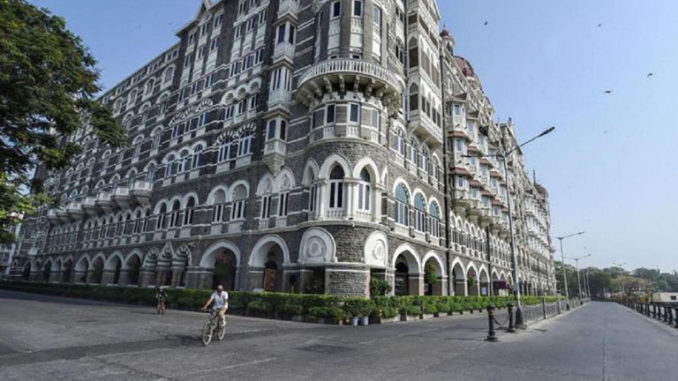
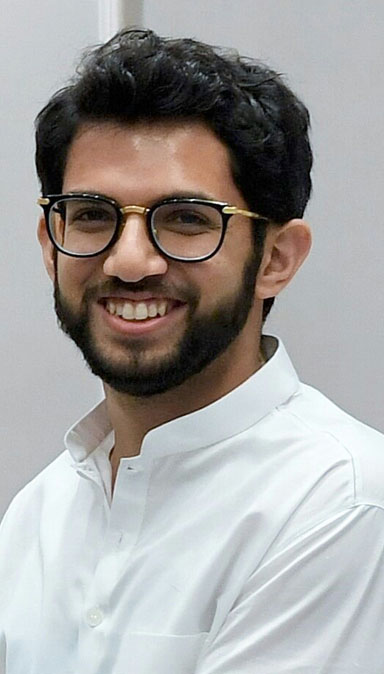
The Mumbai Model has been praised by the honorable Supreme Court and many more people for which we are grateful. But my message to all the citizens of Maharashtra, stay home, step out only if need be, mask up, the battle isn’t over. The praise is only a sign for us to be brave and fight harder, and that is our ethos! As the first case of Covid hit Maharashtra in Pune, around March 9 last year, a containment zone was immediately formed around the home of the index case and the patient was traced, tested and isolated. At the Vidhan Sabha we had just presented our first budget as the MVA government. I remember walking into the conference hall where Chief Minister Uddhav Thackeray, Deputy Chief Minister (and Guardian Minister of Pune) Ajit Pawar, and Revenue Minister Balasaheb Thorat were on an emergency video call with the administration of Pune. They were joined by a group of senior ministers and bureaucrats. Covid-19 was then too new to be fully comprehended. There had been varying opinions of its strength against the Indian climatic conditions, our so called innate-immunity and other such misleading information. As Pune was being sealed, the conference ended, and we knew that these cases weren’t the last we’d see of Covid in Maharashtra. There were many more. Estimates ranged from 700 to mind-boggling figures. It was a pandemic as officially declared by the World Health Organisation.
We are very far from declaring any victory in this battle; we are still braving the second wave; we are preparing for the possibility of a third wave. Such battles respect no declaration of any win, only preparation, pro-activeness and continuous improvement.
Here, I enlist some measures undertaken by the Government of Maharashtra against Covid-19.
1) The Medical Task Force
The first thing Chief Minister Thackeray put together was a medical task force consisting of 11 doctors. They interact and problem-solve with many others within Maharashtra and around the world, guide the state’s policy on the medical response to Covid-19. The administration swears by the advice of the Task Force and all administrative decisions pertaining to Covid-19, especially those taken during the peak, are based on it. The Task Force meets once a week, but is available to every doctor and administrator 24/7.
2) Jumbo Centers and Triage Areas
In what came to be known as “Jumbo Centers”, makeshift hospitals sprung up across Maharashtra in less than a month. The first was at NSCI, Dome: a dearth of space for beds in an environment of ever-increasing patients led us to place beds here. This center, coupled with a couple of volunteer doctors, gave us a new prototype and then the BKC Centre came up with rapid speed. The Jumbo Centre for Mumbai was initiated, as I remember, by MMRDA Commissioner RA Rajiv, on the request of Chief Minister Uddhav Thackeray on the day that the first case in Pune was isolated. The Chief Minister’s logic was simple: looking at the inflow of international passengers into Mumbai, the cases wouldn’t stop, we would have to learn from around the world and prepare for more cases.
Each Jumbo Centre has a triage area, a concept institutionalized by the Task Force for most private hospitals as well. This serves as the holding space for all those patients who have Covid-like symptoms and are waiting for their reports from a lab. This is also where patients that come as emergencies can be kept overnight to stabilize before they are ascertained to be either Covid positive or negative. Nobody can turn away a patient before stabilizing her/him.
Jumbo Centers also have special areas to put on and take off PPEs. Every frontline worker’s safety is paramount. Similarly, there are passages for patient inflow and outflow as also escalation beds and step-down beds for recovery. The wards are further divided into non-oxygenated beds (30%) and oxygenated beds (70%) as the first ward for primary treatment. An escalation of the infection would lead a patient to either an HDU or an ICU, depending on the severity of the case. Most Jumbo Centers have labs to handle RT-PCR tests and to carry out blood work, making them self-sufficient. Among the early and important experiments at the Jumbo Centers was the introduction of oxygen concentrators. This came about in my conversation with the Deputy Mayor of London, Rajesh Agarwal, while seeking his opinion on ventilators and their operations to handle Covid-19, in the last week of March last year. We called for one the next week and it worked magic for us in Worli; then we straight away pushed for more across the state.
The Chief Minister’s instructions to create Jumbo Centers turned out to be a boon as in no time we increased from 400 isolation beds in Mumbai and Pune together, to more than 4,50,000 beds across the state.
Along with Jumbo Centers across Maharashtra, we now have thousands of private nursing homes, and halls and schools manned and run by private organizations, with bed capacity from 10 to 150 in various localities. Covid treatment at government and civic/local self-government hospitals and Jumbo Centers has been free from Day One. And the administration has taken precautions to ensure medicines are procured and available to patients at the right time.
3) Ward helplines and hospitals
One of the most successful models is that of the Mumbai ward helplines. At a certain time in Mumbai, we had a few people in the central command center test positive and in isolation, which caused a mini collapse in the system for a few hours. So evolved the protocol in Mumbai to decentralize ward war rooms in early June 2020. Municipal Commissioner Iqbal Singh Chahal decided to distribute the workload of a central helpline to each ward war room.
Each war room is managed by adequate staff with the ability to address people’s concerns, calm them done, convey bed allocation or escalate any emergency. These war rooms have helped us avoid chaos and collapse, and an active bed dashboard of their ward, and across Mumbai, have been very useful.
We saw that hospitals were getting booked for beds that the patients did not require, and ICUs were falling short. Some beds were being booked in advance by people not infected by Covid in the anticipation that one may need it. In the protocol of open/self-booking by people, there was no clarity over the bed status and patients occupied beds for longer than needed. It was then that the BMC swung into action and mandated that no public or private hospital could allocate beds by themselves to pre-booked or walk-in patients. Even today, the bed allocations in Mumbai are done only through the ward war room helplines, irrespective of who calls: a politician, a corporate executive or anyone else, we serve all equally and the best we can.
However, just like a bed cannot be allocated directly to anybody, no hospital can refuse a patient in an emergency, and has to stabilize the patient immediately in their triage area.
There are also helplines that track the health of covid positive patients in isolation and home isolation every day and some helplines that monitor the health of those passengers in institutional quarantine across Mumbai.
4) Tests
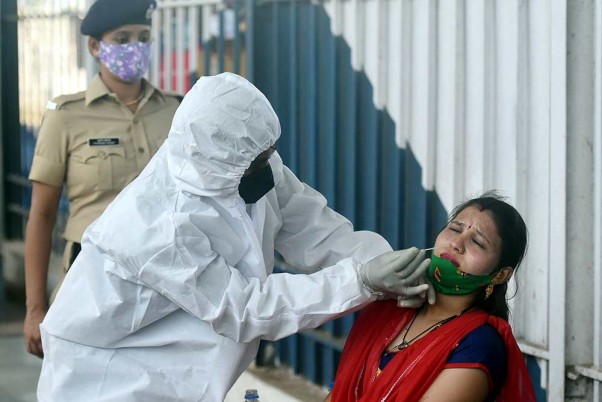
With the inflow of the first cases of Covid-19, there was still confusion over the type of tests and who should do it and why. Initially, it was meant only for symptomatic cases with a doctor’s prescription. In no time, we realized that the tests had to be increased. In July 2020, RT-PCR tests were liberalized, and citizens were urged to get themselves tested at the first sign of a symptom or upon being in close contact of a Covid positive patient. No prescriptions or self-declarations were needed for RT-PCR tests.
Private labs sprung up and the tests kept increasing day by day, so did cases. Doctors in local clinics and mobile clinics also started temperature checks and tests for other symptoms. The members of the cabinet give importance to testing, transparent reporting and accountability in our data points, as this isn’t a game of perception management. It is about pandemic management. Clean data helps us to have computed models and lets data analysts predict the next peak/fall and our response to it.
5) Contact Tracing and Quarantine
This was one of the most effective mechanisms used early, however, it is largely possible only in a hard lockdown. For every Covid case, the administration traced almost 20 high-risk contacts that may have come in contact with the case in the past seven days. It was natural for many of them to turn positive. Today, many homes, buildings are sealed for quarantine measures for the safety of all when a Covid positive case is found. Even today, testing and quarantining is considered to be the single-highest priority for the state, including for international passengers quarantined at various hotels across Mumbai.
6) Lockdown
The Maharashtra Model implemented by Chief Minister Uddhav Thackeray has been that of giving adequate signals before actually heading into a lockdown. A mindset has to be created. After the very first case in Maharashtra in 2020, the state went into a calibrated lockdown, first closing schools, colleges, theatres and malls. Then, non-essential service private offices, and so on, escalating the nature of the lockdown till the day of the ‘Janta Curfew’ and when the national lockdown that was announced. This meant people were not in shock, they had been given time to adjust to the new restrictions. In lifting the lockdown by the end of 2020, a similar staggered pattern was used.
Even during lockdowns, agriculture and manufacturing industries, export import activities, financial offices, essential services and offices have been kept open, along with restaurants being allowed home delivery. The idea is to keep citizens safe at home, and thus break the chain of transmission, while helping the state to also advance its medical infrastructure.
There may be debates on lockdowns and curbs, but even today, with the inadequate vaccine supply, uncontrolled mingling and non-symptomatic cases being super-spreaders, it is the only way to control the infection. The transmission drops immediately. Our first job at hand is to safeguard citizens, this is tough call but protects them.
7) Disinfection drives
We asked each urban local body and rural local body to carry out mass disinfection drives in public places at least once a week. Internationally proven disinfectants are used, and, in many cities, public transport used by essential service providers, is sanitized at regular intervals.
Many elected representatives started disinfecting housing societies, colonies, slum societies, so all this became decentralized with each one taking up the responsibility of their own vicinity. However, even today, in cities like Mumbai, the BMC sanitizes the home and the floor of the person that has tested positive and seals the floor.
8) “Majhe Kutumb, Majhi Jababdari”
In September 2020, the state launched a massive data collection and analysis drive called “Majhe Kutumb, Majhi Jababdari” (My Family, My Responsibility) which led to most households being visited by state representatives who collected and collated health data. It also included a check on Covid symptoms, along with the data of any other health issue faced by the person. This gave us real-time insights into the true health of the state.
9) Vaccination
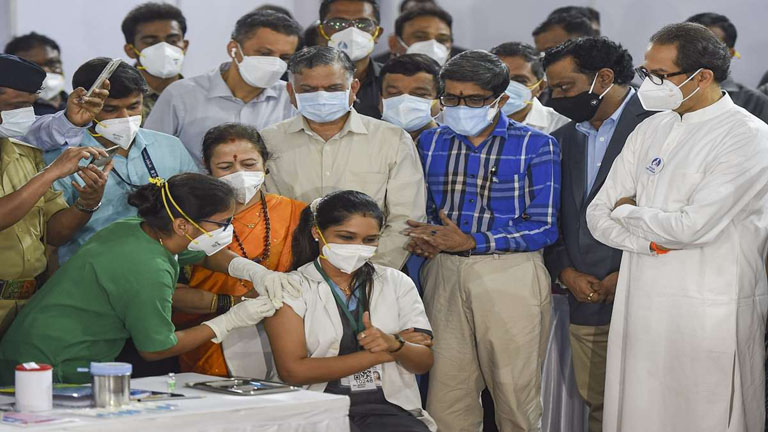
The State Cabinet decided to vaccinate all citizens from 18-44, which was mandated by the Union Government to be the responsibility of the state, without anyone having to compulsorily pay for it. The Chief Minister and his cabinet had requested the Centre to allow universal vaccination, and thus the below 45 age group was deregulated and mandated to the State.
It is a matter of pride for the state that the citizens responded to the vaccination drive positively, making Maharashtra the leading state in the vaccination campaign. The state set a record of 500,000 persons vaccinated in a single day and we are ready to set new benchmarks soon.
Another innovative move for vaccinations has been to start drive-in centers for senior citizens and differently abled citizens. They can be driven to a vaccination center, given the jab without stepping out of the car or an autorickshaw and park near the observation areas, seated in the vehicle all the while. The non-availability of vaccines remains a matter of worry and thus we scramble for more vaccines each day.
However, we believe this shall be resolved as we continue to work with the union government and vaccine manufacturers who are permitted to supply directly to states.
The Way Ahead
While we focus on the vaccination drive, we must prepare for a possible third wave. Chief Minister Uddhav Thackeray indicated these preparations around mid-April, even as we were handling the second wave.
The state has begun to work on a medical response, civic response and a corporate response to the possible third wave.
The medical response includes creating more facilities with beds, ICUs, medicine and oxygen, but also focusing on the demography that hasn’t been affected by Covid as yet – children.
Civic response draws us to a calibrated reopening and what would Covid-appropriate behavior would mean for vaccinated people and the arrival of new strains or mutations.
Corporate response considers appropriate behavior in offices and industries to ensure that transmission, if at all, is at its bare minimal and the company doesn’t have to come to a halt each time a case is found in its staff.
(The author is a cabinet minister in the Maharashtra government. He holds the environment, tourism and protocol portfolios. He’s also the president of Yuva Sena, the Shiv Sena‘s youth wing.)



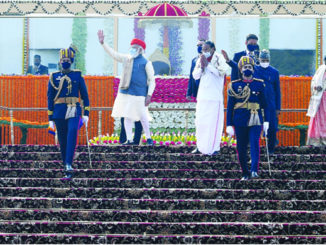
Be the first to comment